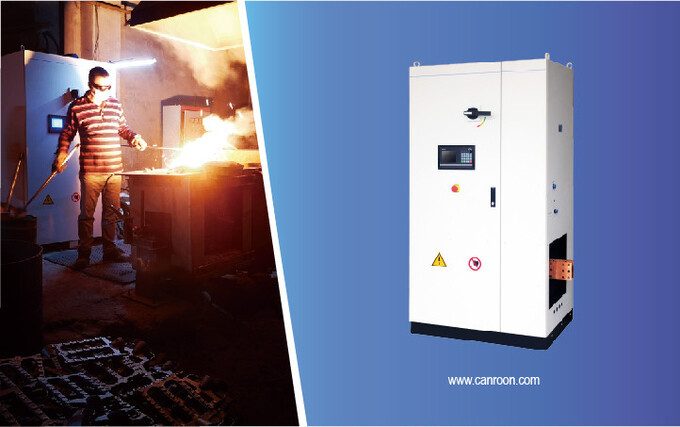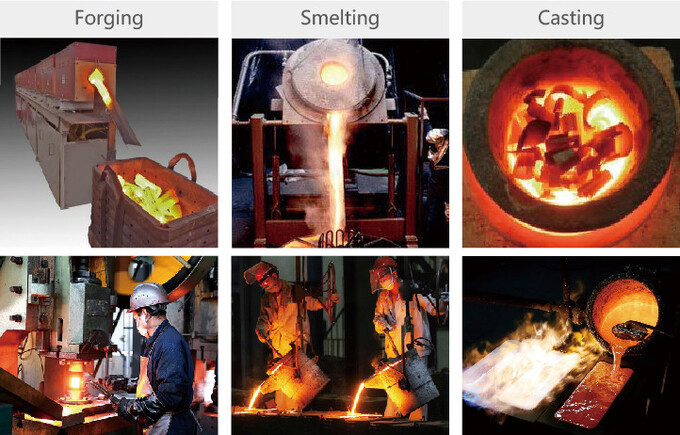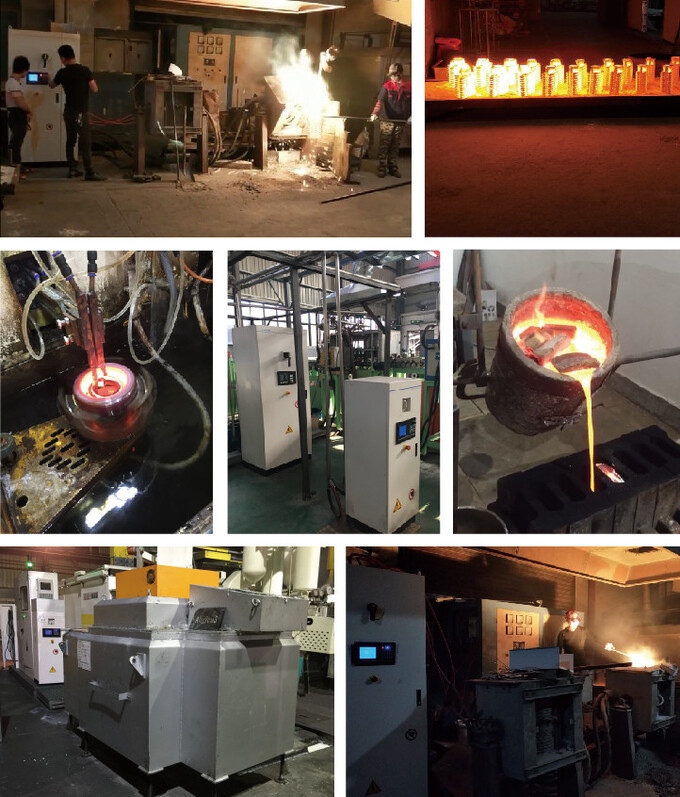
News
Imagine heating metal quickly, safely, and with precision using the Canroon forge induction heater. This Metals Melting Induction Heater eliminates open flames, significantly reducing fire risks. Additionally, it minimizes waste heat, smoke, and harmful emissions, ensuring a cleaner workspace. As part of an Intelligent Induction Heating System, it operates without burning fossil fuels, making it an eco-friendly solution. It’s a true revolution for blacksmithing.

Key Takeaways
The Canroon forge induction heater heats metal safely without flames. It lowers fire risks and is better for the environment.
Setting up and taking care of the heater is important. Check parts often and clean the coil to keep it working well.
Pick the right coil and set the temperature for the metal. This helps heat faster and gives better results.
Setting Up Your Forge Induction Heater
Getting your Canroon forge induction heater ready for action is easier than you might think. With a little preparation and attention to detail, you’ll be smelting and forging like a pro in no time. Let’s walk through the setup process step by step.
Unboxing and Inspecting Components
When your forge induction heater arrives, the first thing you’ll want to do is unbox it carefully. Check that all components are included and in good condition. Missing or damaged parts can delay your setup, so take a moment to inspect everything thoroughly. Look for the main unit, the induction coil, power cables, and any additional accessories. If you notice anything unusual, contact the manufacturer right away.
Here’s a quick checklist to guide you:
Ensure the induction coil is intact and free of visible damage.
Verify that the power cables are securely attached and undamaged.
Confirm that the instruction manual is included for reference.
Taking these steps ensures a smooth start and prevents unnecessary hiccups during assembly.
Assembling the Heater for Use
Now that you’ve inspected the components, it’s time to assemble your forge induction heater. The design of the Canroon heater makes assembly straightforward, even for beginners. Follow the instructions provided in the manual to ensure everything is set up correctly and safely.
To help you get started, here’s a simplified guide:
Turn off the cooling water and the main switch.
Place a bucket under the inductor to catch any leaking water.
Loosen the nuts on the connector jaws and release the thrust pieces.
Remove the inductor and clean the contact surfaces with a Scotch-Brite™ pad.
Inspect the O-rings and contact surfaces for damage, replacing them if necessary.
Insert the new coil, ensuring it fits snugly with the coaxial transformers.
These steps not only make assembly easier but also ensure your induction forging system operates efficiently. The engineering behind this heater emphasizes ease of use, so you can focus on your craft rather than troubleshooting.
Preparing Your Workspace for Metal Smelting
Before you fire up your forge induction heater, take a moment to prepare your workspace. A well-organized and safe environment is key to successful metal smelting. Start by choosing a location with proper ventilation to prevent heat and fumes from building up. Keep flammable materials far away from the heater, and ensure you have enough space to maneuver your workpieces.
Here are a few tips to optimize your workspace:
Position your forge on a stable, heat-resistant surface.
Keep essential tools like tongs and hammers within easy reach.
Use a fireproof mat or shield to protect the surrounding area.
By setting up your workspace thoughtfully, you’ll create a safer and more efficient environment for induction forging. Plus, you’ll save time and energy when you’re ready to start heating metal.
Pro Tip: The Canroon forge induction heater reduces energy usage by 24% compared to traditional methods. It also cuts total process time from 60 seconds to just 52.4 seconds. With these efficiency gains, you’ll spend less time waiting and more time creating.
Operating the Forge Induction Heater
Selecting the Right Coil for Your Workpiece
Choosing the right coil is essential for efficient induction forging. The coil acts as the heart of the system, transferring energy to your workpiece through electromagnetic fields. To get the best results, you need to match the coil's design to the shape and size of the metal you're working with. For instance, circular coils work well for uniform heating, while rectangular ones are better for flat or irregular surfaces.
Pay attention to the spacing between the coil and the workpiece. If the gap is too large, the induction field weakens, leading to uneven heating. On the other hand, a coil that's too close can cause overheating. Proper spacing ensures effective heat transfer and prevents damage to both the coil and the metal. Additionally, consider the coil's material and durability. High-quality coils withstand thermal and electrical stresses better, ensuring consistent performance over time.
Pro Tip: Optimize current density in the coil to achieve even heat distribution. This prevents hot spots and ensures your workpiece heats uniformly.
Adjusting Temperature and Timing
Precise temperature control is crucial for successful induction forging. Start by using a programmable power supply to adjust the current strength based on your desired temperature. Sensors or infrared thermometers can help you monitor the heat in real time, allowing you to make quick adjustments as needed. This ensures that your metal reaches the ideal temperature for forging without overheating.
For more advanced control, consider using an integrated temperature control module. This feature allows you to pre-program temperature profiles, making it easier to handle complex heating tasks. If you need rapid temperature changes, an external temperature controller unit like the TC-01 can be a game-changer. It provides the flexibility to adapt to different materials and processes.
Here’s a quick guide to ensure accurate temperature adjustments:
Let the heater stabilize before starting.
Use certified reference substances for routine calibration.
By following these steps, you’ll maintain consistent heating performance and avoid common pitfalls.
Ensuring Material Compatibility
Not all metals respond the same way to induction heating. Before you begin, check the material properties of your workpiece, such as resistivity and magnetic permeability. These factors influence how efficiently the metal absorbs heat. For example, ferrous metals like steel heat up quickly due to their high magnetic permeability, while non-ferrous metals may require more energy.
To ensure compatibility, test a small sample of the material first. This helps you determine the optimal settings for your forge induction heater. Also, keep in mind that some materials may require specific coil designs or temperature profiles for effective heating. By tailoring your approach to the material, you’ll achieve better results and extend the lifespan of your equipment.
Note: Always consult the manufacturer’s guidelines for material compatibility. This ensures safe and efficient operation of your induction heating system.
Safety Tips for Using the Heater
When working with the Canroon forge induction heater, keeping safety at the forefront is essential. Let’s dive into some key practices to ensure you stay protected while forging.
Essential Personal Protective Equipment (PPE)
You can’t overstate the importance of wearing the right gear when operating an induction heater. Proper PPE shields you from heat, sparks, and molten metal splashes. Start with heat-resistant gloves and a face shield to protect your hands and face. Long-sleeved shirts and pants made of natural fibers like cotton are a must. Avoid synthetic materials like polyester or nylon—they can melt and cause severe burns.
Here’s what safety standards recommend:
OSHA Standard 29 CFR 1910.132 emphasizes general PPE requirements.
ASTM Standard F 1002 outlines protective clothing for thermal hazards.
ISO 9185 categorizes clothing protection levels for molten metal splashes.
Always inspect your gear for wear and tear before each use. Damaged equipment won’t offer the protection you need.
Pro Tip: Keep a fire extinguisher nearby. It’s a simple step that can make a big difference in emergencies.
Maintaining Proper Ventilation
Induction heating doesn’t produce smoke or fumes like traditional forges, but good ventilation is still crucial. Heat buildup can make your workspace uncomfortable and even dangerous. Set up your forge in a well-ventilated area, preferably near a window or exhaust fan. If you’re working indoors, consider using an industrial-grade ventilation system to keep the air fresh and cool.
Position your forge away from walls or flammable materials. This reduces the risk of accidental fires and ensures you have enough room to work safely. A clutter-free workspace isn’t just efficient—it’s safer too.
Safe Handling of Heated Materials
Once your workpiece is heated, it’s time to handle it with care. Use tongs or pliers designed for high temperatures to move the metal. Never touch the coil or the heated material with your bare hands—it’s an easy way to get burned. Place the hot metal on a stable, heat-resistant surface to avoid accidents.
Plan your movements before you start. Know where you’ll place the heated material and keep your tools within arm’s reach. This minimizes the chances of dropping or mishandling the workpiece. Remember, safety isn’t just about protecting yourself—it’s about creating a controlled and predictable environment.
Reminder: Always let the coil cool down before making adjustments or replacing it. This prevents unnecessary wear and tear on your equipment.
Maximizing Efficiency in Metal Smelting
Regular Maintenance and Cleaning
Keeping your induction forging system in top shape starts with regular maintenance and cleaning. A clean and well-maintained forge ensures consistent performance and minimizes downtime. For instance, cleaning the heat exchangers prevents dirt and scale buildup, which can block heat dissipation. Similarly, maintaining a dust-free environment around the induction heater reduces wear caused by debris or coolant residues.
Here’s why maintenance matters:
By sticking to a maintenance schedule, you’ll extend the lifespan of your induction heating equipment and keep it running smoothly.
Tip: Inspect the coil regularly for damage or wear. A damaged coil can lead to uneven heating and reduced efficiency.
Troubleshooting Common Issues
Even with proper care, you might encounter occasional hiccups with your induction heating system. The key is to identify and address these issues quickly. For example, if your coil isn’t heating evenly, check for improper spacing or damage. Uneven heating often stems from a misaligned coil or a workpiece that’s too far from the coil.
Here are some common problems and quick fixes:
Issue: The forge isn’t reaching the desired temperature.
Solution: Verify the power supply and ensure the coil is properly connected.Issue: Overheating or hot spots on the workpiece.
Solution: Adjust the coil spacing and inspect for damage.
By troubleshooting effectively, you’ll save time and avoid costly repairs.
Tips for Optimizing Heating Performance
To get the most out of your induction forging system, focus on optimizing its performance. Start by using modern control systems to fine-tune energy usage. These systems help you use less energy per unit of output, reducing both costs and CO2 emissions. Additionally, consider installing an Energy Reduction Unit (ERU). This can cut energy consumption and greenhouse gas emissions by up to 35% while maintaining the necessary heating levels.
Here are a few more tips to boost efficiency:
Use high-quality coils to ensure consistent heating.
Optimize the spacing between the coil and the workpiece for better energy transfer.
Keep your HVAC system running efficiently, as it can account for up to 40% of total energy usage.
By following these strategies, you’ll enhance the performance of your induction heating system and contribute to a more sustainable workspace.
Reminder: Always let the coil cool down before making adjustments. This prevents unnecessary wear and ensures safety.
The Canroon Forge Induction Heater is transforming blacksmithing. Its rapid heating and precise temperature control save time while ensuring consistent results. Users report high satisfaction, with energy savings of up to 7% for commercial applications. Plus, its safety features, like eliminating open flames, make it a reliable choice for any workspace.
Pro Tip: Use high-quality coils to maximize efficiency and extend the heater’s lifespan. This small step can make a big difference in your projects.
FAQ
What metals can I heat with the Canroon Forge Induction Heater?
You can heat ferrous metals like steel and iron efficiently. Non-ferrous metals, such as aluminum, may require higher energy settings for effective heating.
Tip: Always check the material's compatibility in the user manual before starting.
How do I clean the induction coil?
Use a Scotch-Brite™ pad to clean the coil's contact surfaces. Avoid abrasive materials that could damage the coil. Regular cleaning ensures consistent performance and extends its lifespan.
Can I use the heater for small-scale projects?
Absolutely! The Canroon Forge Induction Heater works well for both small and large projects. Its adjustable settings make it versatile for various metalworking needs.
Pro Tip: Use smaller coils for precise heating on compact workpieces.
Please give us a message

